Paleozoic
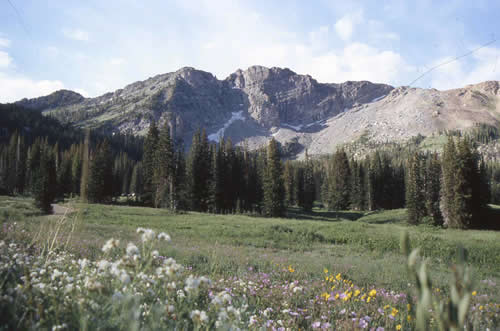
Overlying the Ophir Shale are a series of limestones spanning an enormous period of geologic time. These rocks are major cliff formers at Alta, forming Devils Castle, Supreme Bowl, much of Catherines Area, Westward Ho, Collins Face, High Rustler, Eagles Nest and Hellgate Cliffs. These limestones were formed in shallow, crystal clear water in the […]
Paleozoic
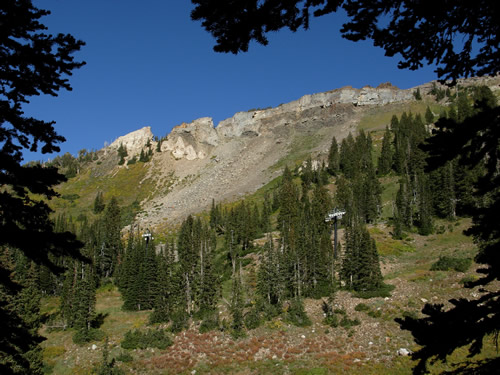
Overlying the Tintic Quartzite is the Ophir Shale a dark red-brown, deep water sediment. The Ophir Shale is best known at Alta for forming the jagged outcrops above the High Traverse. This rock unit crosses the trail near the end of the High Traverse and when snow depths are low, fragments of these outcrops litter […]
Paleozoic
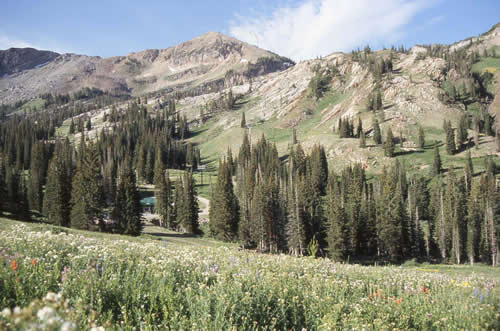
The bulk of the rocks at Alta, the rocks that we ski on, record the advances and retreats of ancient oceans that occupied this area of North America between 540 and 330 million years ago (Paleozoic Era). The oldest of these rocks is the Tintic quartzite a hard, dense, buff-colored rock that generally forms rounded […]
Proterozoic Rocks
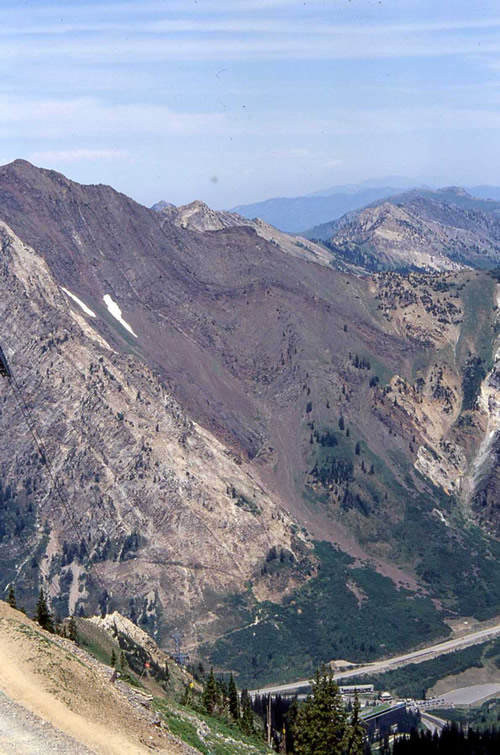
The oldest rocks you will see at Alta form the dramatic outcrops on the southeast flank of Mount Superior on the north side of Little Cottonwood Canyon. These are extremely old rocks (Upper Proterozoic Era, + 800 million years). The lighter brown rocks to the west consist of the Little Cottonwood Formation. The dark brown […]
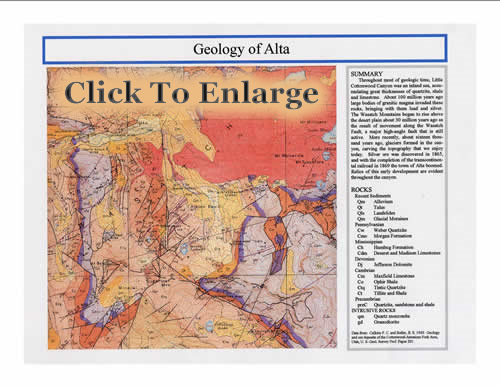
The bedrock geology of Alta and the surrounding area was mapped by the U. S. Geological Survey in 1943. U.S. Geological Survey, 1943
The Wasatch Fault
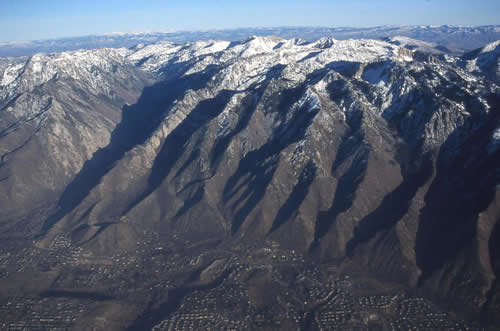
The rapid movement along this fault is a big part of the Alta experience. From the base of Little Cottonwood Canyon to the top of Mount Baldy you pass through eight separate climatic zones.They are: Most of Alta falls within the Englemann Spruce and Subalpine Fir Forest with thick stands of evergreens, beautiful meadows, babbling brooks […]
The Wasatch Fault
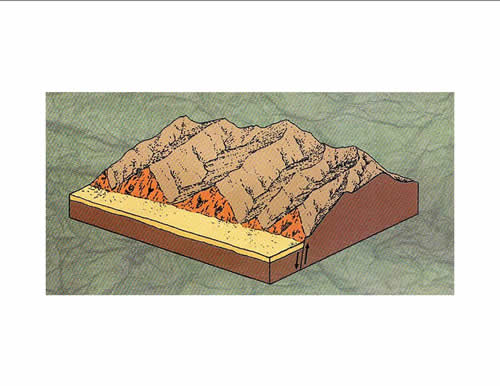
The Wasatch Fault is a high angle normal fault, dipping steeply to the west. The fault is active today, with at least 19 major earthquakes documented along the fault over the last six thousand years (UGS, 1996). Although there have been no recent large movements along the fault, evidence of potentially catastrophic earthquakes are well […]
The Wasatch Fault
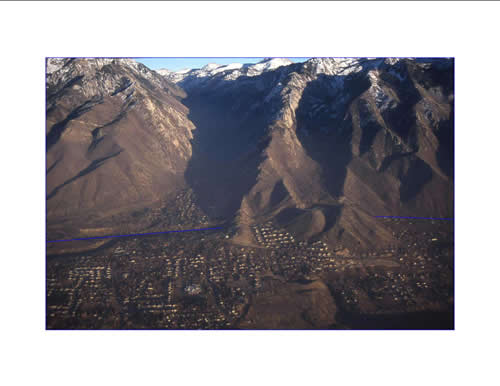
The most pronounced structural feature is the Wasatch Fault scarp that runs along the range front and is responsible for the uplift of the Wasatch Mountains. The mouth of Little Cottonwood Canyon is one of the most famous geologic locations in the world. Here a number of geologic features merge defining the recent geologic history […]
Folds, Faults and Fracture Systems
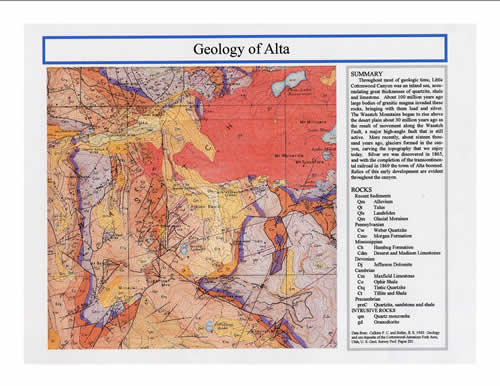
All rocks, including the Alta Stock, are cut by a vast network of near vertical northeast-trending fractures (note red lines on the Geologic Map of Alta). These fractures more or less run parallel to Little Cottonwood Canyon. Note red lines
Folds Faults and Fracture Systems
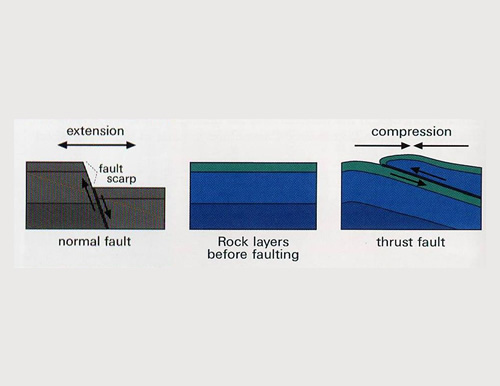
Examples of different fault movements are shown. The relative movement along normal faults and thrust faults are depicted in this illustration. The relative motion of reverse faults is opposite to normal faults. Source UGS, 2008.
